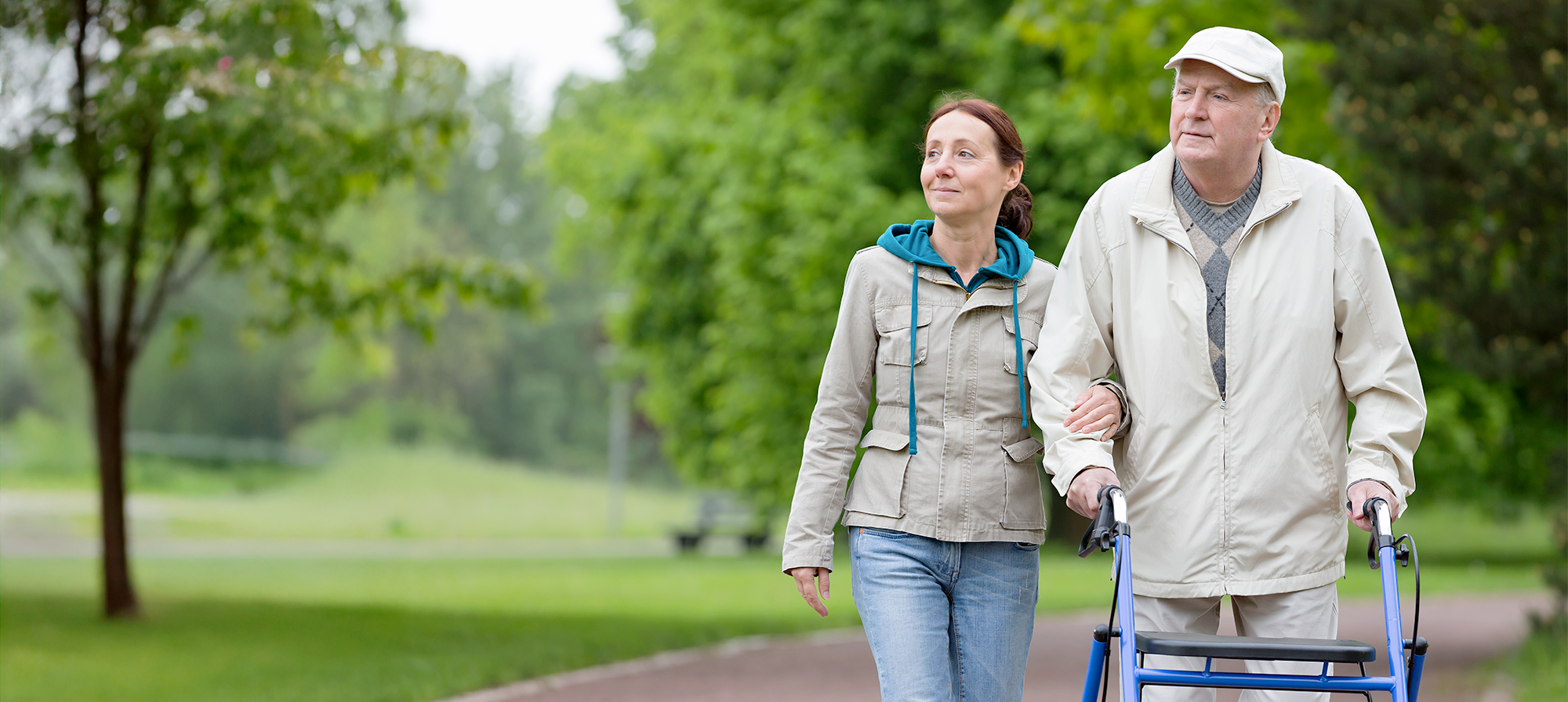As you age, you may find that daily tasks are not as easy as they used to be. Issues like arthritis, poor vision, trouble hearing, or balance problems can crop up with age. These health challenges can make it harder to get around, cook and clean, use the stairs, or do other activities.
But there are tools—known as assistive devices and assistive technology—that can make these tasks easier. These tools can improve your quality of life, keep you safe, and help you maintain your independence.

The role of assistive devices and technology
Assistive devices and technology are tools that can help you with daily tasks that you might otherwise find hard to do. And this, in turn, can allow you to be more independent.
Some of these devices are quite simple—but very useful. A magnifying glass makes it easier to read small print. A grabber tool can help extend your reach so you can more easily grasp items that are up high or down low.
Some are more complex. Screen-reading software can read onscreen text aloud. Motorized wheelchairs can help you get around.
These devices and technologies aren’t just for older adults. Many people may find them useful, including those with disabilities or certain health conditions.
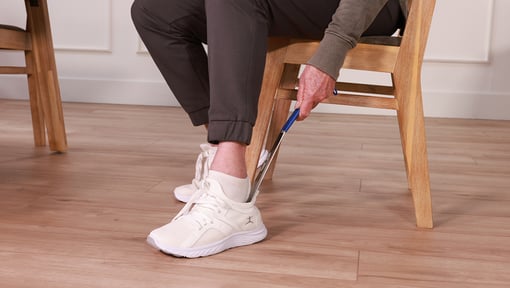
The different types of assistive devices and tech
There are many types of devices and technologies that can make your daily life easier—and safer. Plus, they allow you to be more self-reliant.
- Mobility: Canes, walkers, wheelchairs, scooters, and other mobility aids can help you move around safely. Grab bars can provide extra support and stability. Grabber tools can help you avoid having to stretch up high or bend down low.
- Hearing: Hearing aids amplify sounds. This can help you hear more clearly. Closed captions and subtitles display the dialogue as onscreen text. This can make it easier to understand the audio in TV and movies.
Learn more about how you can find and buy a hearing aid that’s right for you. - Vision: Magnifying glasses and reading glasses can help enlarge small print. Screen enlargement software can magnify onscreen text. Screen readers are a type of tech that can read onscreen text aloud. Many smartphones have a magnifier built into the camera.
- Fine motor skills: Adaptive equipment can make it easier to perform tasks if you’ve lost grip strength or dexterity. There are specially designed utensils and gadgets that make it easier to prep, cook, and eat. There are easy-to-open pill containers. There are tools to help you get dressed and maintain personal hygiene. Technology, like voice recognition software, can make it easier to use your computer or cellphone to add text without the need to type.
- Memory: You can use your phone, tablet, or computer to keep track of appointments. You can also use them to set up electronic reminders. Pill organizers can help you keep track of your medicines. Smart devices or assistants, like Siri or Alexa, can answer questions and set reminders.
- Emergency help: Another useful device is one that allows you to call for medical help if you need it. This is known as a personal emergency response system. This is an electronic device that you keep on you at all times. In case of an emergency, all you have to do is push a button. This puts you in touch with emergency services right away. You can wear the device as a necklace or a bracelet so it’s always within easy reach.
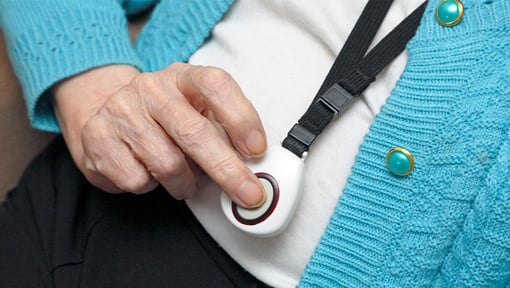
Why assistive devices and tech are so beneficial
Doctors, scientists, and inventors have worked together for years to create tools to help older adults live safely in the comfort of their home. Here are ways these tools can help you carry on with your daily life in the safest way possible.
- Simplify daily tasks. No more struggling to open jars as you prepare dinner or squinting to read the directions on your pill bottles. There are easier ways to accomplish these tasks. No need to feel unsteady on your feet. A cane or a walker can offer you extra support.
- Stay safe both in and outside your home. As you age, a decrease in balance, mobility, and strength can raise your risk of falling. So can many health conditions and medicines. But mobility aids can help you stay safe. A cane can help keep you steady. Grab bars can help you get into and out of the shower safely. A grabber can help you get hard-to-reach items off the floor.
Assistive devices and tech can keep you safe in other ways, as well. Being able to read instructions can help you take your medicine in the right way. Being able to hear your doctor can help you follow treatment plans. Electronic reminders can help you remember doctor’s appointments. - Maintain your independence. If you have mobility issues or trouble keeping up with daily tasks, you will likely need support. You may have to get help from friends and family or home health aides. You may even need to move to an assisted living facility or a nursing home at some point.
But if you can maintain your mobility and keep up with day-to-day tasks, then you can care for yourself much longer. This is crucial if you want to continue to live in your own home as you grow older. This is known as aging in place.
Here are some other steps you can take to prepare for aging in place. - Improve your quality of life. Being able to function on your own, stay in your own home if you choose to, and continue to do the things you love to do can all contribute to your quality of life.

What kinds of assistive devices and technologies are right for you?
There are a lot of devices to choose from, so it may feel overwhelming. But here are a few factors to consider:
- Focus just on the tasks or activities that you need the most help with. You don’t want to get tempted by all the tools available and become sidetracked. Let your needs guide you, and zero in on the devices that would be most useful to you.
- Ask your healthcare team, like your doctor or physical therapist, what they might recommend. They understand well what health challenges you are facing. And they probably know what kinds of assistive devices would be best for you.
- Check with friends or family members to see what devices they have found helpful. You’re probably not the only one who needs some assistance. Ask your loved ones if they’re using any assistive devices or tech that they like. If you have a friend or family member who is dealing with similar challenges to you, that would be the best person to talk with.
- Try the simplest devices first. They’re often cheaper and easier to use and maintain. And if they do the job well, great! If you find that you need more assistance, then you can try something more complex.
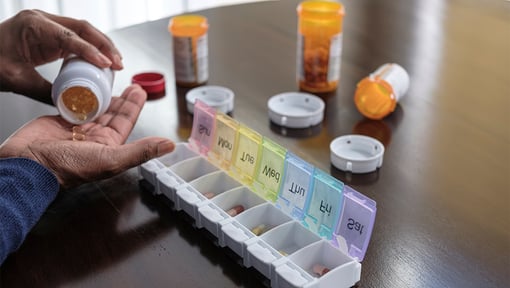
What you should know about your assistive devices and tech
It’s important to know exactly how your devices and tech work. The more you know about them, the safer and easier they will be to use.
Here are some important things to know or ask about:
- Suitability for your home
- Will larger equipment, such as a wheelchair, fit through doorways in your home?
- Can the equipment move around easily in smaller spaces, like your bathroom?
- If your home has stairs, will that create any problems?
- Operating the equipment
- Does your device require electricity, batteries, or running water?
- Does it need a telephone line or internet to operate?
- Equipment instructions
- Read all equipment instructions carefully.
- Ask questions if you don’t understand how the device works.
- Are there any safety instructions or issues to be aware of?
- Alarms and error messages
- Pay attention to any alarms or error messages on the equipment.
- Understand what the error messages mean before it’s an emergency.
- Know who to contact for questions
- If you purchased your equipment through a supplier, call your equipment supplier for help if you don’t understand how the device works.
- If you purchase any equipment separately or through a third party, it may not have a warranty or customer service department. Be sure you are aware of this before making any large purchases.
- Report any problems with the device immediately to your equipment supplier.
Keep in mind, there are many brands and types of assistive devices and tech. Like any product, these devices can range in quality and cost.
If you need to shop for an assistive device, be sure to compare brands and ask questions. Before you buy, know:
- Exactly what the device does and if it’s right for you
- How it will help with your unique needs
- How much it will cost
- If there are any recurring costs for services
- If the company that makes the product has a good customer service record
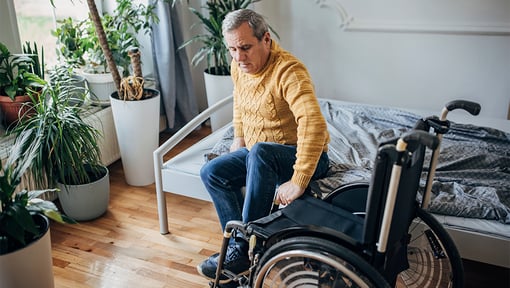
How to pay for assistive devices and tech
Some assistive devices and tech can be costly. You may be eligible for financial assistance to cover the costs of certain devices and tech, as long as your doctor prescribes them. This might include mobility aids or hearing aids.
There are other avenues you can explore that might help cover the costs. Here is an overview of some sources of funding that you can investigate to help cover—or at least offset—the costs:
- Insurance: Medicare; Medicaid; private insurance
- Government: Department of Veterans Affairs; national and state assistive technology programs
- Organizations: Assistive technology-related organizations; organizations centered around specific disabilities, like the American Council of the Blind or the National Multiple Sclerosis Society; service clubs like United Way, March of Dimes, and Knights of Columbus
You may also want to check out discount retailers or secondhand stores, like Goodwill, where you may be able to find some devices at a bargain price.

How to learn more about assistive devices
There are many organizations that can help you find assistive devices for your needs. Here are a few to get you started.
1. State Assistive Technology Program Directory
https://www.at3center.net/state-at-programs
Every state has information and resources relating to assistive devices. They may have a list of different types of devices to help you decide the right product for you. They may be able to answer questions or demo certain devices. Some may even lend you devices to try it out yourself.
2. Assistive Technology Industry Association (ATIA)
www.atia.org
ATIA is a not-for-profit organization of manufacturers, sellers, and providers of technology-based assistive devices and services.
3. Rehabilitation Engineering and Assistive Technology Society of North America (RESNA)
www.resna.org
RESNA is interested in the health and well-being of those with disabilities. Their goal is to help people with disabilities through technology.
If you find that daily activities are becoming harder to do, you may want to consider one or more assistive devices. These tools have helped change the lives of millions of people. And they can help you, too.
Not a Silver&Fit® member? Learn more about everything the program has to offer, including more helpful healthy living tips like this, here on our website.
This information is not intended to take the place of regular medical care or advice. Please check with your doctor before using this information or beginning any self-care program. Images used for this article do not depict any members of the Silver&Fit Program.
References
AARP. (n.d.). Make your life easier with helpful gadgets. http://assets.aarp.org/external_sites/caregiving/preparing/helpful_gadgets.html
Administration for Community Living. (2023, June 14). Assistive technology. https://acl.gov/programs/assistive-technology/assistive-technology
Alzheimer's Society. (2021, August 11). Memory aids and tools. https://www.alzheimers.org.uk/get-support/staying-independent/memory-aids-and-tools
American Foundation for the Blind. (n.d.). Assistive technology products. https://www.afb.org/blindness-and-low-vision/using-technology/assistive-technology-products
Assistive Technology Industry Association. (n.d.). AT resources funding guide. https://www.atia.org/home/at-resources/what-is-at/resources-funding-guide/
Eldercare Locator. (n.d.). Assistive technology. https://eldercare.acl.gov/public/resources/factsheets/assistive_technology.aspx
Family Caregiver Alliance. (2020). Assistive technology. https://www.caregiver.org/resource/assistive-technology/
Freedman, V. A., Kasper, J. D., & Spillman, B. C. (2017, March 1). Successful aging through successful accommodation with assistive devices. The Journal of Gerontology: Psychological Sciences and Social Sciences, 72(2), 300-309. https://doi.org/10.1093/geronb/gbw102
Mayo Clinic. (2022, February 3). Fall prevention: Simple tips to prevent falls. https://www.mayoclinic.org/healthy-lifestyle/healthy-aging/in-depth/fall-prevention/art-20047358
National Assistive Technology Act Technical Assistance and Training (AT3) Center. (n.d.). AT Act programs. https://www.at3center.net/state-at-programs
Tuazon, J. R., Jahan, A., & Jutai, J. W. (2019, July). Understanding adherence to assistive devices among older adults: A conceptual review. Disability and Rehabilitation: Assistive Technology, 14(5), 424-433. https://doi.org/10.1080/17483107.2018.1493753
United States Department of Health and Human Services. (2018, October 24). What are some types of assistive devices and how are they used? National Institutes of Health. https://www.nichd.nih.gov/health/topics/rehabtech/conditioninfo/device
World Health Organization. (2023, May 15). Assistive technology. https://www.who.int/news-room/fact-sheets/detail/assistive-technology#:~:text=Assistive%20products%20maintain%20or%20improve,all%20examples%20of%20assistive%20products
This article was written by Nora Byrne, edited by Jason Nielsen, and clinically reviewed by Elizabeth Thompson, MPH, RDN.



